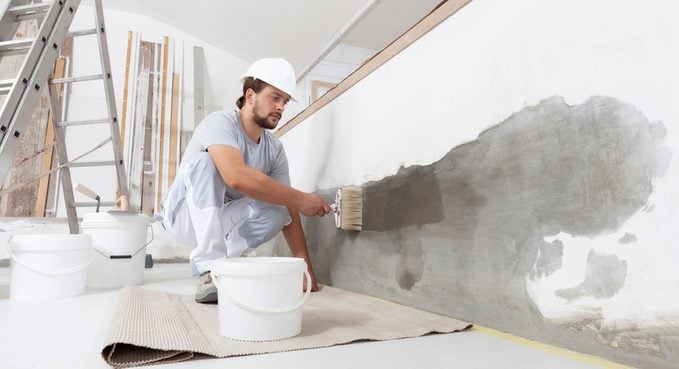What Is Limewash Paint?
Updated: Jan. 30, 2023

Sprucing up your home's interior? Consider limewash paint—this ancient paint is unique and beautiful.
Is your home or cottage in need of an interior design makeover? Consider limewash paint. Significantly different than the regular stuff you can find on the shelves of any hardware store, limewash has a unique look dating back to the 7th century BCE. Limewash gives walls a mottled, antique look, and a unique texture some say reminds them of suede.
Limewash walls are pretty rare here in North America, but they are commonplace in many older buildings across Europe. My wife grew up near the old section of Warsaw Poland, and she tells me limewash walls are as common there as regular paint over drywall is here. Keep reading to learn more about this ancient, unique paint.
What Is Limewash?
Limewash is chalky, textured paint made from a mixture of lime powder, natural pigments and water. Lime powder is made by burning limestone. To make limewash paint, lime powder is aged, then mixed with water to form a putty. Natural pigments and water are added, at a ratio of roughly 10 parts lime putty, 1 part pigment and 1 part water. You can buy limewash ready to apply or mix your own using hydrated lime (available at many agriculture supply stores). The lime component has a natural anti-microbial effect, so it’s good for keeping germs, mold and mildew at bay.
What Colors Does Limewash Come In?
Natural, pigment-free limewash is off-white in color, but nowadays you can find limewash in many different colors and shades: whites, greys, reds, blues and greens.
That said, limewash colors are never bright or bold. Even modern, colored limewash has understated, neutral tones. That’s part of the attraction. Also, it’s usually easier to find limewash in “earthy” tones like greys, beiges and browns, since these are the most common natural pigments.
How to Use Limewash

Initially designed for masonry and plaster walls, limewash goes on best with a long-bristled masonry brush. If your walls are some other material besides masonry (like drywall), you’ll get the best results by applying latex primer before cracking open the limewash.
Limewash always looks much darker when wet than dry, so test your chosen color on a small corner of the wall before getting started. Apply limewash in layers, laying down brushstrokes of different angles to create a distinctly limewash-mottled look.




















